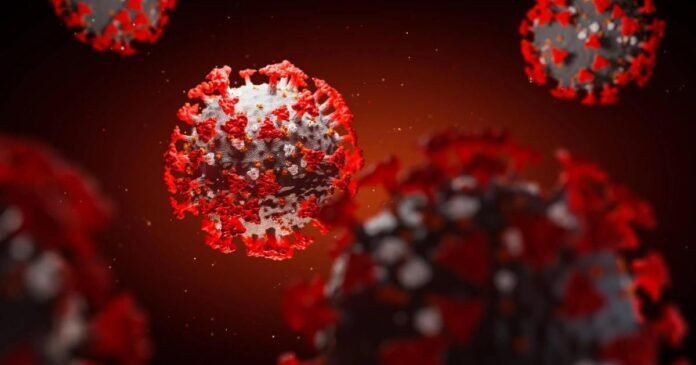In a poignant echo of the pandemic’s two-year anniversary, India confronts a resurgence of the virus through its offshoot, BA 2.86 (Pirola) sub-lineage, known as JN.1. The virus reappears on the Indian landscape, marking its initial presence in Kerala, where a 78-year-old woman became the first reported case. Having experienced mild symptoms, the patient has now successfully recovered, providing a glimpse into the potential trajectory of this new variant.
Classified as a ‘variant of interest’ by the World Health Organisation (WHO), JN.1 is raising eyebrows due to its apparent proficiency in evading immunity. This resurgence aligns with the onset of winter, a season notorious for the rise of respiratory ailments, particularly in regions where the Air Quality Index (AQI) fluctuates between poor and severe.
The Genesis and Circulation of JN.1: the Covid-19 New Variant
JN.1 first made its presence known in the United States in September 2023. By the end of October, it constituted less than 0.1% of SARS-CoV-2 viruses, according to data from the US Centers for Disease Control and Prevention (CDC). In India, the states of Kerala, Karnataka, Tamil Nadu, and Odisha have reported the majority of cases.
Recent health ministry data reveals that India has recorded 260 new coronavirus infections, contributing to an increase in active cases to 1,828. Additionally, Kerala has reported four deaths linked to the new variant.
Understanding the Infectious Nature of JN.1
The CDC’s assessment of JN.1 indicates ongoing growth, hinting at its potential for higher transmissibility or enhanced evasion of the human immune system. However, the CDC is cautious, stating that there is no clear indication, as of now, that the new variant poses a higher risk to public health compared to other circulating variants. “There is no indication of increased severity from JN.1 at this time,” the CDC emphasizes.
WHO’s technical lead, Maria Van Kerkhove, underscores the global increase in respiratory diseases due to various pathogens, including COVID-19, flu, rhinovirus, and mycoplasma pneumonia. She notes that SARS-CoV-2 continues to evolve, with JN.1 (a sub-variant of BA.2.86) already classified as a ‘variant of interest’ and seeing an uptick in circulation.
Global Presence of JN.1 and Singapore’s Perspective
The reach of JN.1 extends to at least 35 nations, with Singapore experiencing a significant resurgence in cases. The Singapore Ministry of Health reports that cases infected by JN.1, a sub-lineage of BA 2.86, currently dominate the COVID-19 landscape. However, Singapore emphasizes that there is no clear indication that BA 2.86 or JN.1 is more transmissible or causes more severe disease than other circulating variants.
Government Response
In response to this development, the Indian health ministry issued a missive to states and Union Territories, emphasizing the importance of control and management strategies. The communication acknowledges the collaborative efforts between the Centre and state governments that have maintained a sustainable low trajectory of COVID-19 rates. However, it underscores the need for sustained vigilance as the virus continues to circulate and adapt to Indian weather conditions and the presence of other pathogens.
States like Kerala and Karnataka remain on high alert, with no restrictions on cross-border movement between them. The health ministry urges constant vigilance and reporting of influenza-like illnesses (ILI) and severe acute respiratory infections (SARI) on a district-wise basis.
Precautions and Symptom Awareness
The symptoms associated with JN.1 remain consistent with those of other SARS-CoV-2 variants. Health officials advise individuals to watch out for fevers, shortness of breath, runny nose, sore throat, cough, and fatigue. Precautions mirror general COVID-19 guidelines, including staying home when symptomatic, seeking medical attention if conditions worsen, and wearing masks in crowded areas, particularly in locations with increasing case numbers.
Effectiveness of COVID-19 Vaccines Against JN.1
Both the WHO and CDC affirm the efficacy of updated vaccines against JN.1. However, data from Singapore raises concerns about the susceptibility of those who received their last COVID-19 vaccine dose more than a year ago. While the effectiveness of vaccines remains strong, the importance of booster shots is underscored for individuals with compromised immune systems and the elderly.
According to the WHO, sera from patients who experienced breakthrough infections, including those associated with the XBB variant, showed robust neutralizing activity against BA 2.86. This suggests that upcoming XBB 1.5 monovalent vaccines could enhance cross-protection against BA 2.86 and its descendant lineages, including JN.1.
The Road Ahead
In conclusion, as India navigates the resurgence of the BA 2.86 (Pirola) sub-lineage, JN.1 of COVID-19, a multi-faceted approach is crucial. Vigilance, adherence to precautions, and widespread vaccination coverage continue to be the cornerstone of mitigating the impact of this new variant. The evolving nature of the virus necessitates ongoing research, a flexible public health response, and a collective commitment to safeguarding public well-being.
